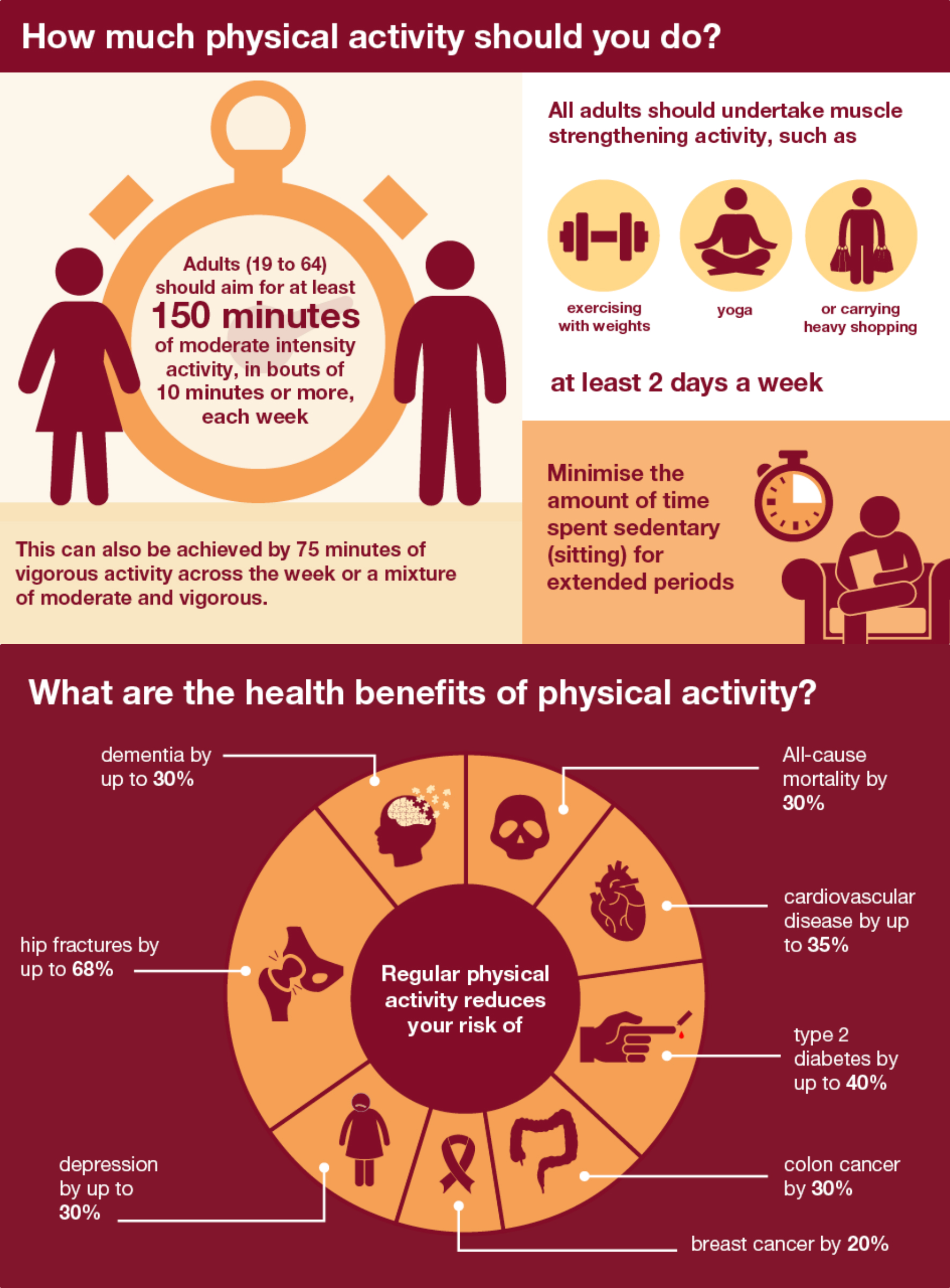Getting active is not just for the fit and healthy, anyone from the wheelchairbound to the physically active can find some form of exercise that gets the body moving. This can be simple activities such as walking, gardening or move specific work such as gym workouts, seated exercises, yoga, Pilates, power walking, running, cycling, the list goes on.
The key is to find something you can enjoy, and that gets you exercising regularly. The government recommends 150 minutes of moderate intensity exercise per week, exercise that gets your breathing a little bit heavier and gets the heart pumping, which can break down to 30 minutes, 5 days per week. Research shows this provides a range of physical benefits as shown below.
Exercise videos and advice

Exercise is a vital part of post stroke life and is seen as the main treatment to improve physical health and fitness. It can improve arm function, leg function, walking, balance, coordination, fatigue, endurance as well as providing a range of mental health and wellbeing benefits.
There is a huge body of evidence to show that exercise also helps in the prevention of a second stroke due to the positive effects on the heart and cardiovascular health.
There is a huge body of evidence to show that exercise also helps in the prevention of a second stroke due to the positive effects on the heart and cardiovascular health.
Getting started

Stroke specific exercise
Due to the variety of physical symptoms that can present following a stroke, your exercises should normally be prescribed by your Neurology Physiotherapist when weakness or coordination is the issue. Listed below are a few basic arm and balance exercises for varying levels that may be appropriate for your level.